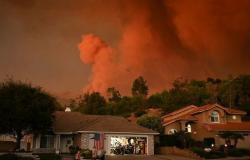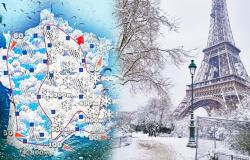In the Northern Alps, the resort of Deux-Alpes (Isère) has welcomed people who are training in the preventive triggering of avalanches, these shots which aim to secure ski areas and ski lifts during heavy snowfalls. The National Association for the Study of Snow and Avalanches (Anena)based in Grenoble, organizes each this unique training in France dedicated in particular to first aid trackers, who come from all over France, to discover how we use explosives and take an exam after two weeks of training. Road agents or soldiers also come to train. Four sessions are organized before the start of the winter tourist season, the first started last week.
loading
Around a hundred people trained in Deux-Alpes before the winter season
At more than 2000 meters above sea level, on the grassy and stony heights of the Deux-Alpes station, detonations ring out. Laurent Cougoulat, trainer at Anena, has one priority: “It’s obviously safety. You don’t go to work taking risks. And what’s more, you need to acquire some technical basics.” Before the start of the winter season, around a hundred people working mainly in ski areas will be trained. This practical and theoretical course lasts two weeks, with an exam at the end and a diploma issued by the Ministry of National Education.
“It’s a highly sought-after qualification”
In the field, trainees learn to manage an avalanche intervention and triggering plan (PIDA). “It’s not complicated but there is still a lot of material, and what is difficult is to ingest and retain all this material”explains the trainer. Among those who complete this training, there are a majority of first aid trackers like Kylian who has worked for six years in the Savoyard resort of La Rosière (1850 meters). “The objective was really to acquire additional skills that interest me for the job. It's very useful and enriching. Afterwards, on the CV it's a big added value to change stations, it's is a highly sought-after qualification. This can allow me to access resorts which are more interesting in terms of PIDA and mountain itineraries.”
“Understand the scope that will be managed by the teams behind it, and also understand the responsibilities that I take on”
There are also other profiles like Romain, slopes director in Méribel. “I have twenty years of experience in the slopes department but I didn't manage the slope safety aspect at all, so for me it's important in terms of credibility, to understand a little of the work of the teams. is more relevant to pass the first and second degree of first aid and to pass the certificate of shooting attendant to understand the perimeter which will be managed by the teams behind, also to understand the responsibilities that I take by signing the mayor's order, in taking responsibility for the safety of the ski area.”
Julien Balidas

Julien Balidas
The biggest danger: going to avalanche trigger zones
The students come from the Jura, the Pyrenees, Savoie, Mercantour and touch explosives for the first time like Marylou. “I was an assistant pyrotechnician but we weren't the ones handling it. I had seen it before but I had never done it, and that changes everything a bit… There, we know that it's really dangerous but we learn to handle them and in principle there is no more risk afterwards and that's good.”
Handling explosives to trigger a preventive avalanche is dangerous but it is not what causes the most accidents, recalls Laurent Cougoulat, the trainer. “In the profession of mountain tracker-rescuer, the greatest danger will especially be the path to go to the avalanche trigger zones, this is where there are the most accidents. Afterwards, it is necessary also be aware that there can be accidents when avalanches are triggered, but it is much less so.”
Triggering evolves with climate change
These preventive avalanche shots in ski areas are evolving with the very noticeable climate change in the Alps. “Practices must evolve” explains Stéphane Bornet, director of the National Agency for the Study of Snow and Avalanches. “We will adapt the quantity of explosives to the quality (dry, wet, dense, light) or the quantity of snow that we will observe on the ground. We will also have to evolve the procedures to ensure the safety of the fireworks operators and also the public. Research is progressing so that we can adapt to climate change.”

Julien Balidas

Julien Balidas

Julien Balidas











